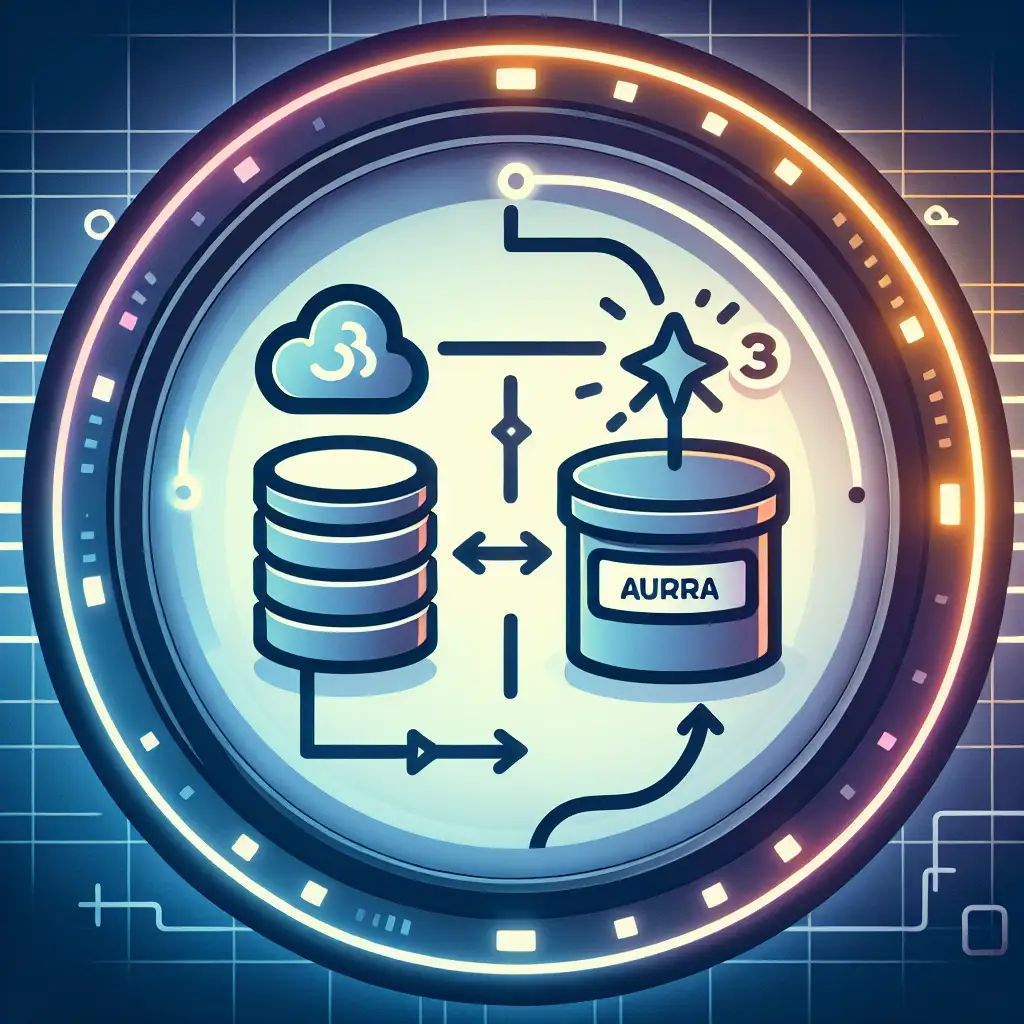Mastering Efficient Data Export: How to Stream Amazon Aurora Data to S3 for Scalable Analytics
Forget heavy ETL pipelines—the real game changer is streaming Aurora data directly to S3, empowering engineers to build real-time insights and offload storage effortlessly with minimal overhead.
If you work with Amazon Aurora and want to scale your analytics or create seamless backup solutions, exporting data efficiently is key. Traditional batch exports or ETL jobs can be slow, complex, and resource-intensive. But what if you could stream your transactional Aurora data continuously to Amazon S3? That unlocks near real-time data availability for analytics, machine learning, or archiving — without disrupting your operational workload.
In this post, I’ll walk you through practical steps to stream Amazon Aurora data to S3 efficiently, highlighting native AWS capabilities and providing code examples so you can implement this fast and reliably.
Why Stream Aurora Data to S3?
Aurora combines the speed and reliability of high-end commercial databases at a cost-effective price. Yet, transactional systems aren’t designed for heavy analytics workloads; complex queries can impact performance.
Amazon S3 complements Aurora perfectly by providing:
- Scalable and Durable Storage: Store unlimited historical data cheaply.
- Analytics Integration: Query data directly via Athena or use services like Glue and Redshift Spectrum.
- Backup & Archival: Automatic versioning and lifecycle management for compliance.
Streaming means continuous incremental data movement rather than periodic snapshots or full dumps, reducing latency and operational overhead.
Step 1: Understand the Replication Options
You have several approaches to export data from Aurora MySQL or PostgreSQL clusters into S3:
| Method | Description | Pros | Cons |
|---|---|---|---|
| Native Aurora Backtrack & Snapshots | Use snapshots saved on S3 | Easy backup | Not incremental; high latency |
| AWS Database Migration Service (DMS) | Set up ongoing replication tasks | Near real-time; minimal code | Some setup complexity |
| Custom Change Data Capture (CDC) with binlog/logminer & Lambda | Extract changes on commit | Fully customizable | Requires building parsers |
| Native integration via AWS Glue/Athena | Orchestrate ETL jobs on S3 data | Serverless/Simplified | Batch-oriented |
In this tutorial, we’ll focus on DMS, the most straightforward managed option that allows ongoing replication from Aurora directly to files stored in S3.
Step 2: Prep Your Aurora Database
Enable Binary Logging (Aurora MySQL)
To allow CDC (Change Data Capture), your Aurora instance must have binary logging enabled because DMS uses binlogs as its source for changes.
- Ensure your cluster parameter group includes:
binlog_format = ROW
log_bin = ON
binlog_checksum = NONE
- Restart the cluster if needed after updating parameters.
For Aurora PostgreSQL, logical replication slots are required:
- Ensure the parameter
rds.logical_replicationis set to1. - Set
max_replication_slots> 0 in the parameter group.
Step 3: Create an S3 Bucket for Your Export
Go ahead and create an S3 bucket or choose one where DMS will dump CDC files:
aws s3 mb s3://my-aurora-export-bucket
Make sure this bucket has appropriate policies allowing access from DMS tasks and potentially Athena later for queries.
Step 4: Configure AWS DMS for Continuous Replication
Create the source Endpoint: Aurora
Navigate in the AWS Console to DMS > Endpoints > Create endpoint
- Type: Source
- Engine: Choose aurora (MySQL/PostgreSQL accordingly)
- Connection info: Fill in your cluster endpoint address, port, username,password.
Test the connection before proceeding.
Create the target Endpoint: S3
Similarly,
- Type: Target
- Engine: Amazon S3
- Specify bucket name (e.g.,
my-aurora-export-bucket) - Enter folder path if desired (example
exports/)
DMS supports output formats like Parquet, CSV, JSON — Parquet works great for compressed analytics-friendly files.
Create a Replication Instance
Choose a size based on dataset throughput — generally start small dms.t3.medium is enough.
Define a Replication Task
Create a new task linking the source endpoint (Aurora) and target endpoint (S3).
Important configurations:
- Migration type: Change Data Capture (CDC)
- Task settings: define how DMS formats output files.
Sample task JSON snippet configuring parquet format might look like:
{
"TargetMetadata": {
"ParallelLoadThreads": 5,
"TargetSchema": "",
"SupportLobs": true,
"FullLobMode": false,
"LobChunkSize": 64,
"LimitedSizeLobMode": true,
"MaxFileSize": 512000000,
"CompressionType": "NONE"
},
"FullLoadSettings": {
"TargetTablePrepMode": "DROP_AND_CREATE",
"CreatePkAfterFullLoad": false,
...
},
...
}
Step 5: Monitor & Validate Streaming Exports
Once started, DMS will perform an initial snapshot of existing tables then stream ongoing changes via CDC into new files in your bucket incrementally broken down by size/time.
You can monitor progress from both the DMS console and by listing objects in your bucket:
aws s3 ls s3://my-aurora-export-bucket/exports/
From here you might trigger Athena queries directly over parquet files without loading into another system:
CREATE EXTERNAL TABLE aurora_export (
id INT,
name STRING,
amount DOUBLE,
update_time TIMESTAMP
)
STORED AS PARQUET
LOCATION 's3://my-aurora-export-bucket/exports/';
Run queries immediately on fresh transactional data!
Bonus: Use Lambda + EventBridge For Real-Time Analytics Pipelines
You can further process new file arrivals with Lambda triggers or EventBridge rules activating downstream workflows — such as rebuilding aggregates or updating dashboards dynamically as new Aurora changes arrive in your lakehouse layer.
Summary & Best Practices
Streaming Amazon Aurora CDC events directly into Amazon S3 offers a highly scalable method to unlock fast analytical querying without impacting operational database performance. Key takeaways:
- Enable binlog/logical replication correctly on your Aurora clusters.
- Use AWS DMS for managed continuous change capture replication with native support for streaming files directly into S3.
- Choose Parquet format when possible for efficient compression & analytic query compatibility.
- Combine with Athena or Glue for serverless SQL queries over streaming exports without ETL complexity.
With this setup, you effectively get operational-level transactional freshness combined with analytics-grade scalability seamlessly!
Try implementing this today—your future self will thank you when dashboards fill with near real-time insights instead of stale snapshots.
Have questions about your specific use case? Drop them in the comments! Happy streaming!
